The Tuskegee Airmen was a group of African American military pilots and airmen who fought in World War II. They formed the 332nd Fighter Group and the 477th Bombardment Group (Medium) of the United States Army Air Forces (USAAF). The name also applies to the navigators, bombardiers, mechanics, instructors, crew chiefs, nurses, cooks, and other support personnel. The Tuskegee airmen received praise for their excellent combat record earned while protecting American bombers from enemy fighters. The group was awarded three Distinguished Unit Citations.

The Freeman Field mutiny was a series of incidents at Freeman Army Airfield, a United States Army Air Forces base near Seymour, Indiana, in 1945 in which African American members of the 477th Bombardment Group attempted to integrate an all-white officers' club. The mutiny resulted in 162 separate arrests of black officers, some of them twice. Three were court-martialed on relatively minor charges. One was convicted. In 1995, the Air Force officially vindicated the actions of the African-American officers, set aside the single court-martial conviction and removed letters of reprimand from the permanent files of 15 of the officers. The mutiny is generally regarded by historians of the Civil Rights Movement as an important step toward full integration of the armed forces and as a model for later efforts to integrate public facilities through civil disobedience.

The Tuskegee Airmen is a 1995 HBO television movie based on the exploits of an actual groundbreaking unit, the first African-American combat pilots in the United States Army Air Corps, that fought in World War II. The film was directed by Robert Markowitz and stars Laurence Fishburne, Cuba Gooding Jr., John Lithgow, and Malcolm-Jamal Warner.

Winning Your Wings is a 1942 Allied propaganda film of World War II produced by Warner Bros. Studios for the US Army Air Forces, starring James Stewart. It was aimed at young men who were thinking about joining the Air Force. Members of the production crew would later form the core of the First Motion Picture Unit.

Red Tails is a 2012 American war film directed by Anthony Hemingway in his feature directorial debut, and starring Terrence Howard and Cuba Gooding Jr. The film is about the Tuskegee Airmen, a group of African-American United States Army Air Forces (USAAF) servicemen during World War II. The characters in the film are fictional, although based on real individuals. The film was produced by Lucasfilm Ltd. and released by 20th Century Fox, and would be the last film Lucasfilm released before being purchased by The Walt Disney Company nine months later. This was Cuba Gooding Jr.'s first theatrically released film in five years since his starring role in 2007's Daddy Day Camp.

The Red Tail Squadron, part of the non-profit Commemorative Air Force (CAF), known as the Red Tail Project until June 2011, maintains and flies a World War II era North American P-51C Mustang. The twice-restored aircraft flies to create interest in the history and accomplishments of the members of the World War II-era 332nd Fighter Group, also known as the Tuskegee Airmen, whose distinctive red markings on the tails of the P-51s they flew during that war, gave the organization its name.

The 332d Expeditionary Operations Group is a provisional air expeditionary group of the United States Air Force's Air Combat Command, currently active. It was deactivated on 8 May 2012 and reactivated 16 November 2014.

Brigadier General Charles Edward McGee was an American fighter pilot who was one of the first African American aviators in the United States military and one of the last living members of the Tuskegee Airmen. McGee first began his career in World War II flying with the Tuskegee Airmen, an all African American military pilot group at a time of segregation in the armed forces. His military aviation career lasted 30 years in which McGee flew 409 combat missions in World War II, the Korean War and Vietnam War.

Noel Francis Parrish was an American brigadier general in the United States Air Force who was the white commander of a group of black airmen known as the Tuskegee Airmen during World War II. He was a key factor in the program's success and in their units being assigned to combat duty. Parrish was born and raised in the south-east United States; he joined the U.S. Army in 1930. He served in the military from 1930 until 1964, and retired as a brigadier general in 1964.
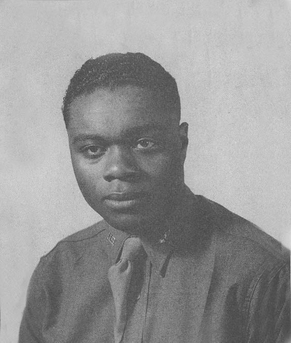
Clarence D. "Lucky" Lester was an American fighter pilot who served in the 332nd Fighter Group, commonly known as the Tuskegee Airmen, during World War II. He was one of the first African-American military aviators in the United States Army Air Corps, the United States Army Air Forces and later the United States Air Force.
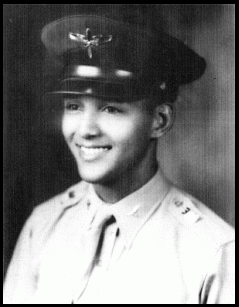
Robert Jones Friend was an American military officer and pilot who served with the Tuskegee Airmen during World War II and led the USAF's Project Blue Book from 1958 to 1963. He also served during the Korean War and the Vietnam War. He had a 28-year military career.

James Henry Harvey III is a retired United States Army Air Corps/United States Air Force (USAF) officer and former African American fighter pilot who served with 332nd Fighter Group's 99th Fighter Squadron, best known as the Tuskegee Airmen, "Red Tails", or among enemy German pilots, Schwartze Vogelmenschen. He is one of the 1,007 documented Tuskegee Airmen pilots.
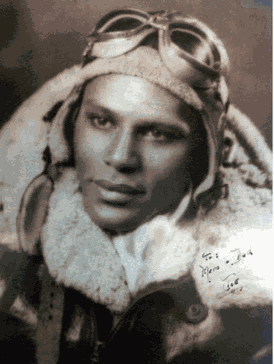
George Jewell Iles was a U.S. Army Air Force officer, former World War II Prisoner of War in Nazi Germany, and combat fighter pilot with the 332nd Fighter Group's 99th Fighter Squadron, best known as the all-African American Tuskegee Airmen.
Woodrow Wilson Crockett(pronounced "Crow-Ket") was an officer in the U.S. Army Air Force/U.S. Air Force and a fighter pilot and interim commanding officer of the all-African American 332nd Fighter Group's 100th Fighter Squadron, best known as the Tuskegee Airmen or "Red Tails". He was one of the 1,007 documented Tuskegee Airmen Pilots.
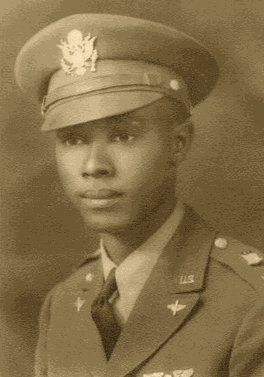
Mac Ross was a U.S. Army Air Force officer and combat fighter pilot during World War II. A member of the Tuskegee Airmen, he commanded the 100th Fighter Squadron and served as the Group Operations Officer for the 332nd Fighter Group.
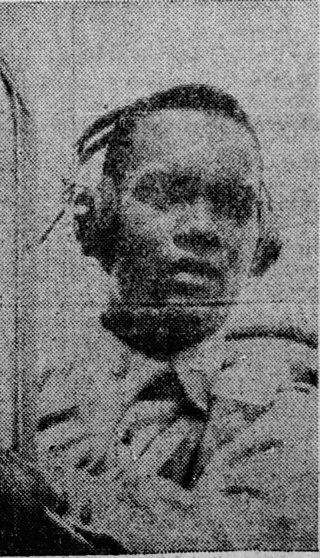
Sherman Windham White Jr. †) was a U.S. Army Air Force officer and combat fighter pilot with the all-African American 332nd Fighter Group's 99th Fighter Squadron, best known as the Tuskegee Airmen.

Wilmore B. Leonard was an American college professor, U.S. Army Air Corps/U.S. Air Force officer and combat fighter pilot with the 332nd Fighter Group. One of 1,007 documented Tuskegee Airmen Pilots, Leonard was a member of Tuskegee's sixth cadet graduating class and one of the first 50 African American combat fighter pilots. He served during World War II, retiring from the military in 1946. He subsequently attended the Howard University School of Dentistry, and became a dentistry professor, holding the position for 25 years.

William Hugo Holloman III was a U.S. Army Air Force officer, combat fighter pilot, and high-profile member of the prodigious 332nd Fighter Group's 99th Fighter Squadron, best known as the Tuskegee Airmen, "Red Tails," or “Schwarze Vogelmenschen” among enemy German pilots.
William Noel Alsbrook, Sr. was an American inventor and combat fighter pilot with the 332nd Fighter Group's 99th Fighter Squadron, best known as the Tuskegee Airmen, "Red Tails," or "Schwartze Vogelmenschen" among enemy German pilots.

James Alonzo Walker was an American aviator from Manning, South Carolina who served as a Tuskegee Airman during World War II. He flew more than 102 missions in the European Theatre of WWII, and was shot down in action over Serbia at the time occupied Kingdom of Yugoslavia by Third Reich ( Germany). He was saved in Halyard Mission known in Serbian as in July 1944t, by Chetniks and general Dragoljub Draža Mihailović. He served in the military until 1964. He became the first African American commander of an integrated unit in 1950.

















